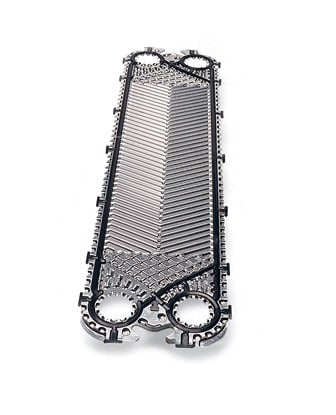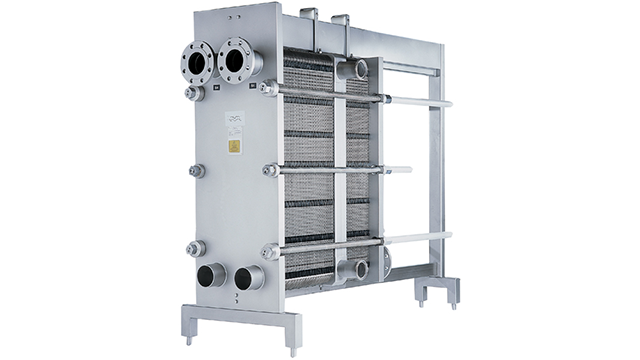M line
Розбірні пластинчасті теплообмінники Alfa Laval серії М використовуються для високого розрахункового тиску (> 10 бар), наприклад при виробництві газованих напоїв. Широкий асортимент типів пластин і прокладок відповідає вимогам до матеріалів, які контактують з харчовими продуктами (FCM), щодо пастеризації та інших функцій нагрівання та охолодження в гігієнічних і загальних цілях в молочної, харчової, харчової та фармацевтичної промисловості.
Конкурентний вибір для гігієнічних процесів високого тиску і загальних застосувань
- Розроблено спеціально для високого розрахункового тиску
- Зручні в обслуговуванні - відповідають вимогам FDA ущільнення для легкого відкриття, огляду і очищення, а також безрозбірного миття
- Устойчивость к загрязнениям и тепловая эффективность благодаря диапазону глубин штамповки и шевронных рисунков, а также различному гофрированию
- Гнучкість - область теплообміну може бути змінена шляхом додавання або зняття пластин чи поєднання різних пластин і матеріалів
- Підходять для багатосекційних теплообмінників для пастеризації, забезпечуючи зменшення місця установки і обсягу трубопроводів
Функціональна оптимізація: теплообмінники М серії доступні в трьох різних розмірах і сумісні з різними типами пластин для забезпечення оптимальної продуктивності вашого застосування.

Plate types for different hygienic needs
Two different plate types are available for BaseLine & M Line gasketed plate heat exchangers:
- Chevron type plate pattern ensures good distribution of the product as well as high thermal efficiency and is used in food, dairy, beverage and pharma industries.
-
Gemini double-wall plates ensure a fully mix-proof design. It consists of two plates pressed together and prevents cross contamination between fluids in case of leakage through the plates.
The chocolate pattern distribution area ensures that the fluids are evenly distributed across the entire plate to avoid stagnant zones that can result in fouling.
The chocolate pattern distribution area ensures that the fluids are evenly distributed across the entire plate to avoid stagnant zones that can result in fouling.
Як це працює
Channels are formed between the plates and the corner ports are arranged so that the two media flow through alternate channels. The heat is transferred through the plate between the channels, where the counter-current flow helps attain the highest possible efficiency. The corrugation of the plates provides the passage between the plates, supports each plate against the adjacent one and enhances the turbulence, resulting in efficient heat transfer. Our thermal design engineers will help you design and select the model and configuration that is suitable for your application needs while delivering maximum thermal performance and minimizing pressure drop.

